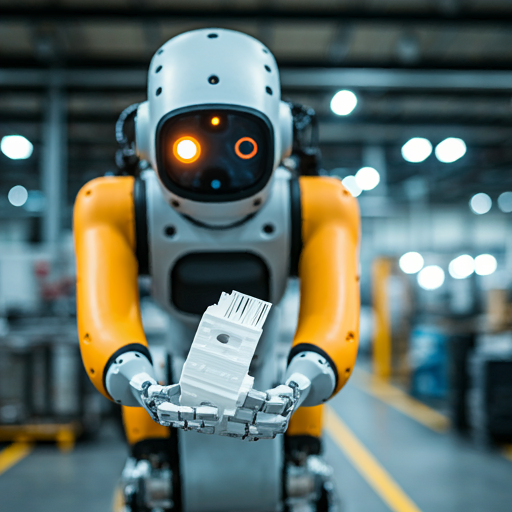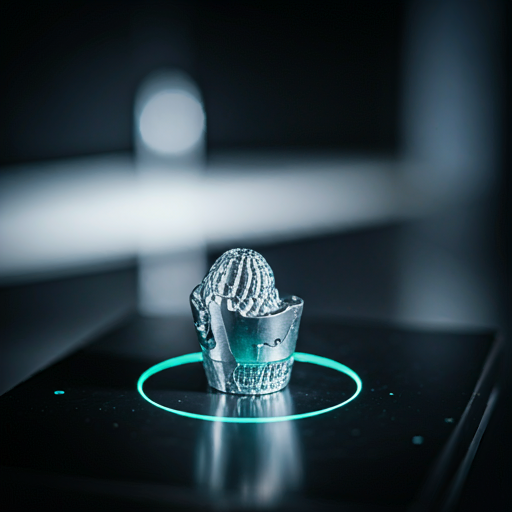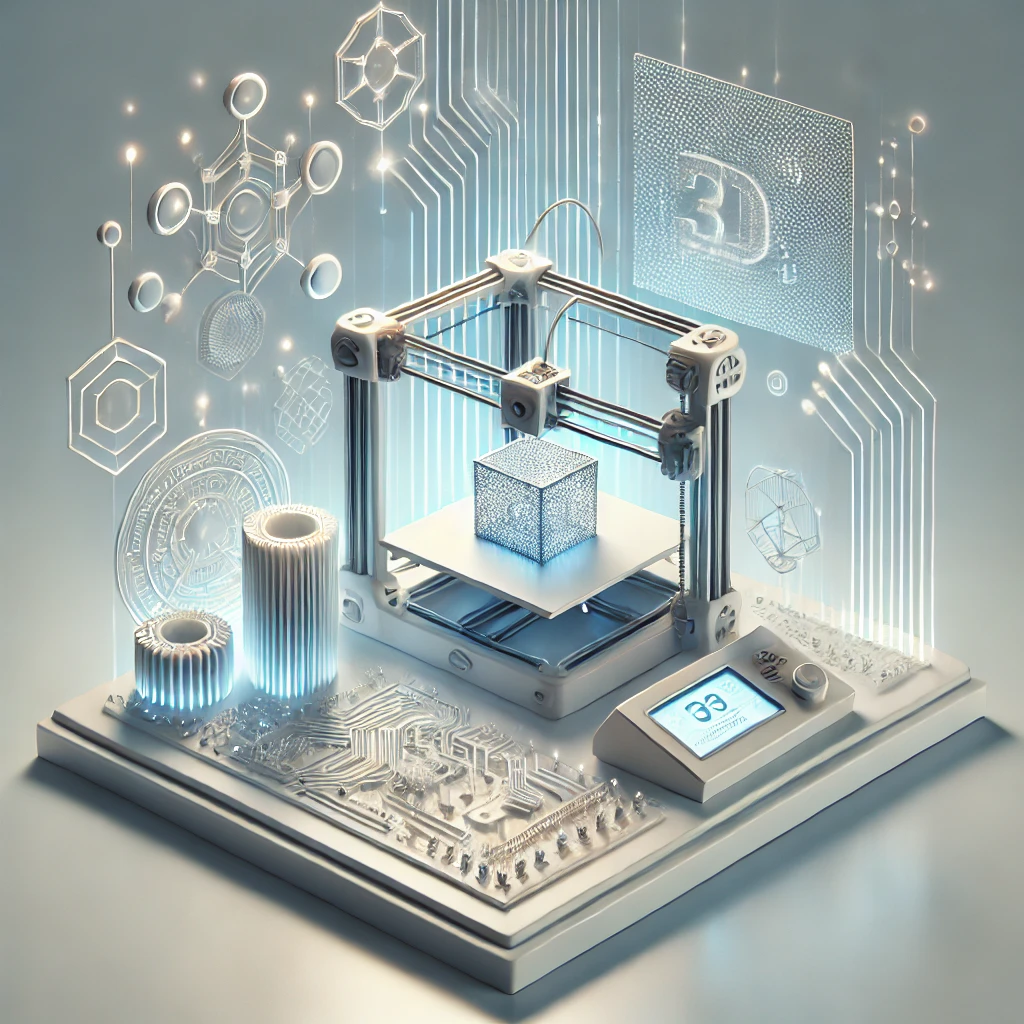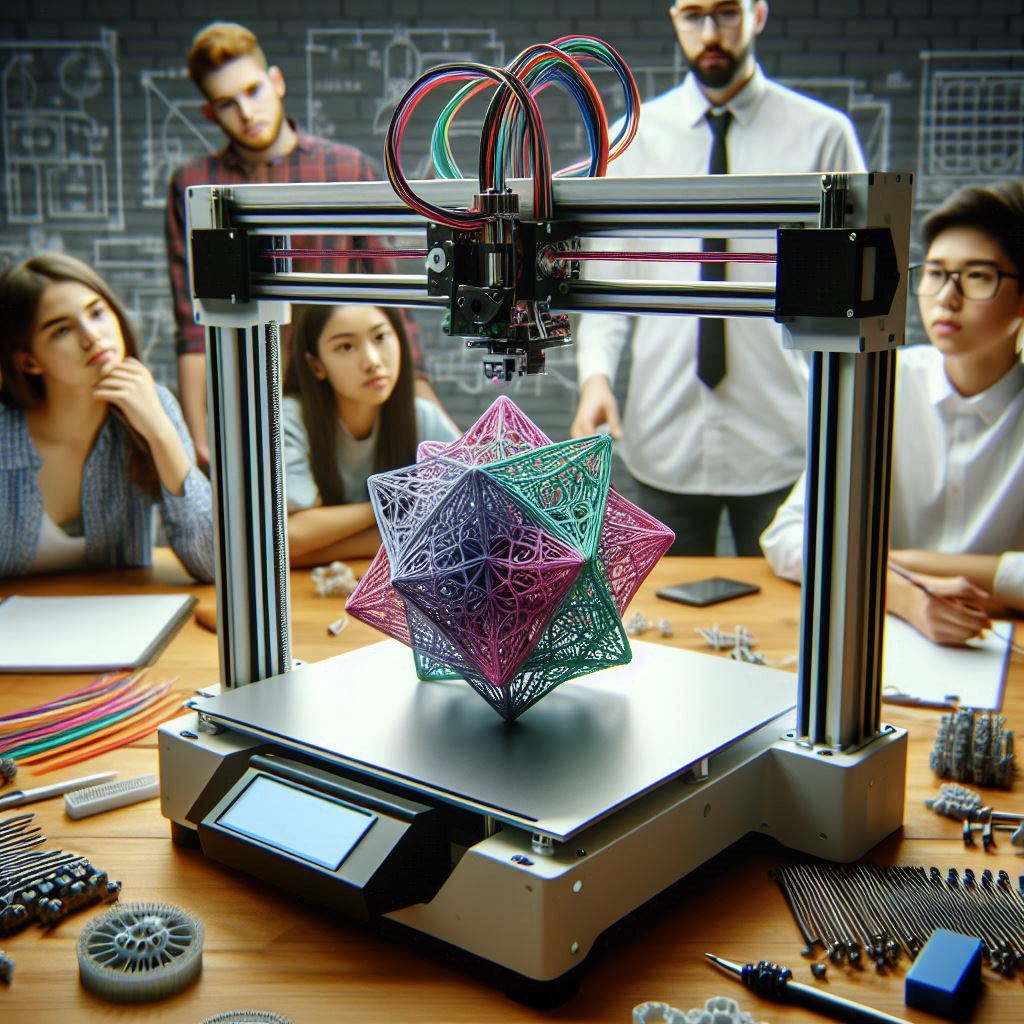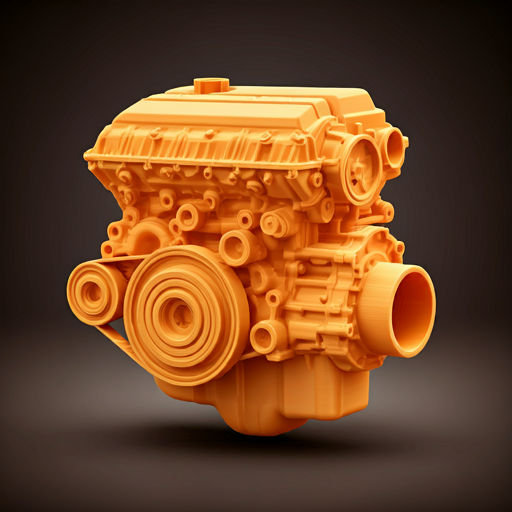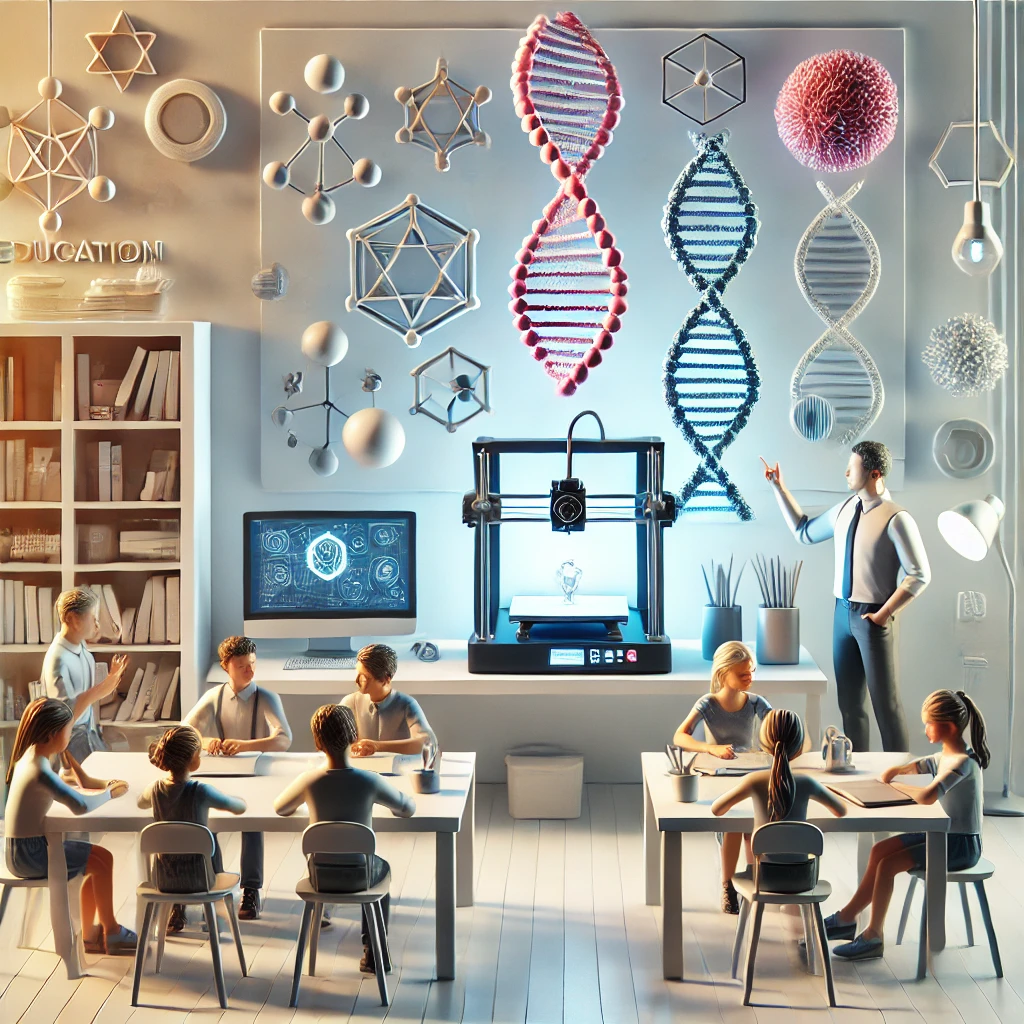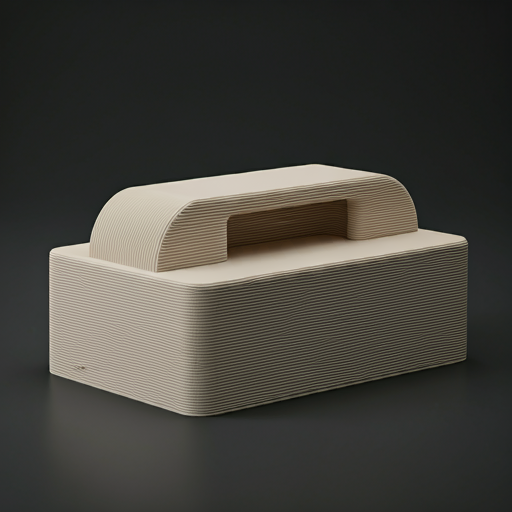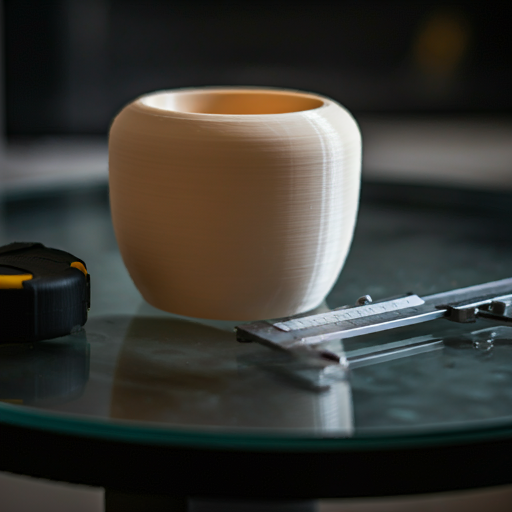
Introduction to 3D Printing in Education
While 3d printing is impacting almost every sector in the market, the education industry is not to be left behind. Schools and colleges can make use of 3d printing in many ways so that it can help the students understand through visual learning, assisting their imagination. 3D printing allows students to create prototypes of products without the use of expensive tooling required in subtractive methods. The classroom environment allows students to learn and employ new applications for 3D printing. 3D printing technology is revolutionizing the educational landscape, providing dynamic and interactive learning opportunities that were previously unimaginable. By bringing digital designs to life through physical objects, 3D printing bridges the gap between theoretical knowledge and practical application, fostering a deeper understanding of complex concepts across various disciplines. This technology is not only enhancing the learning experience but also preparing students for the demands of the modern workforce by equipping them with essential skills in design, engineering, and innovation.

The integration of 3D printing into the classroom empowers students to engage in hands-on, project-based learning. Whether it's creating detailed anatomical models in biology, prototyping engineering designs, or crafting historical artifacts for social studies, 3D printing allows students to explore, experiment, and iterate on their ideas in a tangible way. This interactive approach encourages creativity, critical thinking, and problem-solving, making learning more engaging and effective. Furthermore, 3D printing democratizes access to cutting-edge technology, providing all students with the opportunity to develop skills that are increasingly relevant in a technology-driven world. Students often come up with different and creative ideas, but most of the time they will find difficulties to bring life to their ideas due to the lack of resource and support.
3D printing helps students to create there prototypes in low cost and motivate them to create new things . Since the 3d printing is a user friendly process there is no age restrictions to use it , which means this 3d printing can be incorporated in any level of education.
Different Education Streams can be Benefited by Using 3D Printing
1.Engineering

In engineering education, 3D printing serves as a transformative tool that enhances the learning experience by allowing students to design, prototype, and test their ideas quickly and efficiently. This hands-on approach to learning enables students to move beyond theoretical calculations and simulations, providing them with the opportunity to create and interact with physical models of their designs. For example, in mechanical engineering, students can design gears, engines, or structural components using CAD software and then print these designs to test their functionality and performance. This process helps students understand the practical implications of their designs, identify potential issues, and refine their solutions in a real-world context.
Additionally, 3D printing fosters innovation and creativity in engineering students by enabling them to experiment with complex geometries and customized components that would be difficult or impossible to produce with traditional manufacturing methods. In aerospace engineering, for instance, students can create lightweight, optimized structures that mimic those used in modern aircraft and spacecraft. In biomedical engineering, 3D printing can be used to produce custom prosthetics or anatomical models for surgical planning and practice. This exposure to advanced manufacturing technologies prepares students for the evolving demands of the engineering profession, equipping them with the skills and knowledge needed to excel in various fields, from automotive design to renewable energy systems.
Moreover, the iterative nature of 3D printing encourages a trial-and-error learning process, which is essential for developing problem-solving skills. Students can quickly prototype, test, and modify their designs, gaining immediate feedback on their work. By integrating 3D printing into engineering curricula, educational institutions can provide a more engaging, practical, and future-oriented learning environment, ultimately producing graduates who are better prepared to tackle the challenges of the engineering industry.
2.Medical Education

3D printing is making significant advances in medical education, offering innovative ways to enhance learning and practical training for students. By creating accurate, tangible models of anatomical structures, 3D printing allows medical students to gain a deeper understanding of human anatomy and pathology. These models can be used for detailed study and practice, providing a hands-on learning experience that goes beyond traditional textbooks and 2D images. For instance, students can examine various 3D-printed models of organs, bones, and tissues, gaining insights into complex anatomical relationships and variations that are crucial for their future practice.
Moreover, 3D printing plays a crucial role in surgical training and planning. Medical students and surgical residents can use 3D-printed replicas of patient-specific anatomy to practice surgical procedures, refine their skills, and prepare for actual operations. This practical experience is invaluable in improving surgical outcomes and patient safety. For example, a 3D-printed model of a patient's heart can help a surgical team plan and rehearse a complex procedure, identifying potential challenges and optimizing their approach before entering the operating room. This level of preparation is particularly beneficial for intricate surgeries, such as those involving congenital heart defects or complex fractures.
Students can design and prototype custom medical devices, such as prosthetics, implants, and surgical tools, using 3D printing technology. This capability not only fosters creativity and problem-solving skills but also accelerates the development and testing of new medical solutions. By incorporating 3D printing into medical education, institutions are equipping future healthcare professionals with the skills and knowledge necessary to leverage cutting-edge technologies, ultimately improving patient care and advancing the field of medicine.
3.Architecture
It is very important to properly visualise a home or a building before getting started with the construction. 3D printing can be used to build models which helps in visualisation and improve the aesthetic quality. 3D printing saves time and effort that are required to create a model using manual method .

In architectural education, 3D printing is revolutionizing the way students conceptualize, design, and present their ideas. This technology allows students to translate digital designs into physical models quickly and with high precision, enabling them to explore architectural concepts in tangible forms. By bridging the gap between digital modeling software and physical prototypes, 3D printing enhances the learning experience by providing hands-on opportunities to visualize and iterate on architectural designs.
One significant advantage of 3D printing in architectural education is its ability to create intricate and complex geometries that traditional model-making methods cannot achieve easily. Students can experiment with various design iterations, exploring different forms, scales, and structural configurations. For example, 3D printing enables the creation of detailed scale models of buildings, landscapes, and urban environments, allowing students to analyze spatial relationships and study how their designs interact with surrounding contexts.
Furthermore, 3D printing supports interdisciplinary collaboration within architectural education. Students can collaborate with engineers, urban planners, and environmental specialists to address complex challenges in sustainable design, urban development, and building performance. By producing physical models that accurately represent design intentions, 3D printing facilitates discussions and critiques, fostering a deeper understanding of architectural principles and design strategies. These physical representations help convey design concepts effectively, enabling stakeholders to visualize proposed projects and provide informed feedback.
4.Geology

3D printing is increasingly becoming a valuable tool in geology education, offering innovative ways to study and visualize geological features, processes, and phenomena. By creating physical models from digital data, 3D printing allows geology students to interact with complex geological structures and landscapes in tangible forms, enhancing their understanding and appreciation of Earth's natural environment.
One of the primary applications of 3D printing in geology education is the creation of geological models and specimens. Geologists can convert geological data, such as topographic maps, satellite imagery, or geological survey data, into 3D-printed models. These models accurately represent geological formations, including mountains, valleys, faults, and rock layers, providing students with a hands-on tool to study spatial relationships and geological stratigraphy.
Moreover, 3D printing facilitates the replication of geological specimens for educational purposes. Geology students can study detailed replicas of minerals, fossils, and rock samples, which are essential for identifying geological materials and understanding their properties. This approach allows for a more interactive and immersive learning experience compared to traditional two-dimensional representations in textbooks or photographs. Students can create three-dimensional representations of geological data sets, such as geological cross-sections, or subsurface structures. These visualizations help students interpret geological data more effectively and develop skills in geological mapping, exploration, and resource management.
For example, students can develop prototypes of field instruments, sample collection devices, or geological mapping aids using 3D printing technology. This hands-on experience with digital fabrication tools encourages creativity, problem-solving, and interdisciplinary collaboration within the geoscience community.
5.Forensics
Learners can use 3D printing for replicating evidence, Facical reconstruction and crime scene reproduction .


6.Fashion


In fashion education, 3D printing allows students to explore cutting-edge techniques and materials, transforming their design ideas into physical prototypes with unprecedented precision and customization. One of the key advantages of 3D printing in fashion education is its ability to facilitate rapid prototyping and iterative design processes. Students can quickly translate digital fashion designs into three-dimensional prototypes, enabling them to experiment with shapes, textures, and structures that are difficult to achieve through traditional garment construction methods. This iterative approach encourages creativity and allows students to refine their designs based on real-world feedback and aesthetic preferences.
Moreover, 3D printing promotes sustainability in fashion education by reducing material waste and energy consumption associated with conventional manufacturing processes. Students can optimize material usage by printing garments and accessories on demand, minimizing the environmental impact of overproduction and unsold inventory. Also, 3D printing enables the use of recycled materials and bio-based polymers, further advancing sustainable practices in fashion design and production.Furthermore, 3D printing enhances interdisciplinary collaboration within fashion education. Students can collaborate with engineers, material scientists, and digital artists to explore innovative applications of 3D printing in wearable technology, textile design, and accessory production. This cross-disciplinary approach encourages experimentation with novel materials, textures, and functionalities, fostering innovation and pushing the boundaries of traditional fashion design.
Also, Students can create bespoke garments and accessories tailored to individual preferences and body measurements, offering new opportunities for inclusive and adaptive fashion solutions. This customization capability not only enhances the wearer's experience but also expands the possibilities for creating unique and personalized fashion statements.
Advantages Of 3D Printing In Education
3D printing offers numerous advantages in education, transforming traditional learning experiences across various disciplines:

- Hands-On Learning : 3D printing allows students to create tangible objects from digital designs, providing a hands-on approach to learning that enhances comprehension and retention. This interactive process bridges theoretical knowledge with practical application, making complex concepts more accessible and engaging.
- Visual and Tactile Learning : Visual learners benefit significantly from 3D printing as it enables them to visualize abstract concepts in three dimensions. Learners can touch and manipulate physical models, improving their understanding of spatial relationships, geometries, and structures that are challenging to grasp through traditional methods.
- Creativity and Innovation : 3D printing fosters creativity by empowering students to design and prototype their ideas quickly and affordably. It encourages experimentation with new shapes, textures, and functionalities, promoting innovative thinking and problem-solving skills across disciplines.
- Customization and Personalization : One of the greatest advantages of 3D printing is its ability to create custom-made objects tailored to specific needs and preferences. In education, this capability allows for personalized learning aids, adaptive tools for students with disabilities, and customized educational materials that cater to diverse learning styles.
- Cross-Disciplinary Applications : 3D printing supports interdisciplinary collaboration by bringing together students and educators from various fields, including STEM subjects (Science, Technology, Engineering, Mathematics), art and design, medicine, architecture, and more. It encourages teamwork and knowledge exchange, facilitating holistic learning experiences.
- Prototyping and Iterative Design : In fields such as engineering, architecture, and product design, 3D printing enables rapid prototyping and iterative design processes. Students can test multiple iterations of their designs, identify improvements, and refine their solutions based on real-world feedback, accelerating innovation and creativity.
- Sustainability : 3D printing supports sustainable practices in education by minimizing material waste and energy consumption compared to traditional manufacturing methods. It promotes eco-friendly initiatives through the use of recycled materials, bio-based polymers, and on-demand production, contributing to environmental stewardship.
Conclusion
3D printing is transforming education by offering a dynamic and interactive approach to learning that bridges the gap between theoretical concepts and practical application. This technology enhances comprehension and engagement across various disciplines, from STEM fields to art and design, by providing students with hands-on experiences that foster creativity, innovation, and problem-solving skills. The ability to create tangible, customized models and prototypes allows students to visualize and manipulate complex structures, making abstract concepts more accessible and engaging. Furthermore, 3D printing encourages interdisciplinary collaboration, supporting holistic learning experiences and preparing students for future careers in a technology-driven world.
As educational institutions integrate 3D printing into their curricula, they empower students with the skills and knowledge necessary to navigate and lead in the evolving landscape of modern industries. By promoting sustainable practices and reducing material waste, 3D printing also contributes to environmental stewardship, aligning education with broader societal goals. In conclusion, 3D printing in education is not just an innovative tool but a catalyst for transforming the way we teach and learn. Its impact on education is profound, equipping students with the capabilities to innovate, collaborate, and excel in their future endeavors. As this technology continues to advance, its role in shaping a more interactive, creative, and sustainable educational environment will only grow, paving the way for a brighter, more informed future.
For any further questions about how 3D printing can enhance education, we invite you to visit our website https://iamrapid.com . Understanding the critical roles of 3D printing techniques, such as material selection, design optimization, rapid prototyping, and customization, is essential for achieving superior educational tools tailored to your specific requirements. Whether your priority is achieving precise models, enhancing learning experiences, or optimizing classroom resources, selecting the appropriate 3D printing methods ensures reliable performance and efficiency for your projects. If you're interested in exploring our 3D printing services for educational purposes, please reach out to us at https://iamrapid.com. Share your preferences regarding design specifications, material properties, or any specific requirements, and we'll assist you in finding the best solutions for your needs.
Feel free to share this informative content with others to deepen their understanding of how 3D printing techniques contribute to successful educational applications in various fields.

